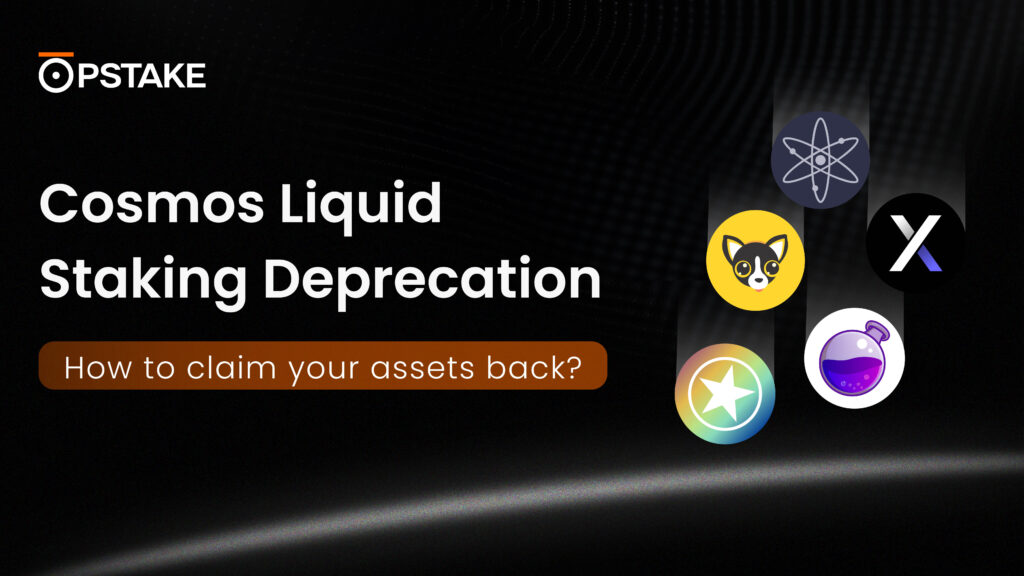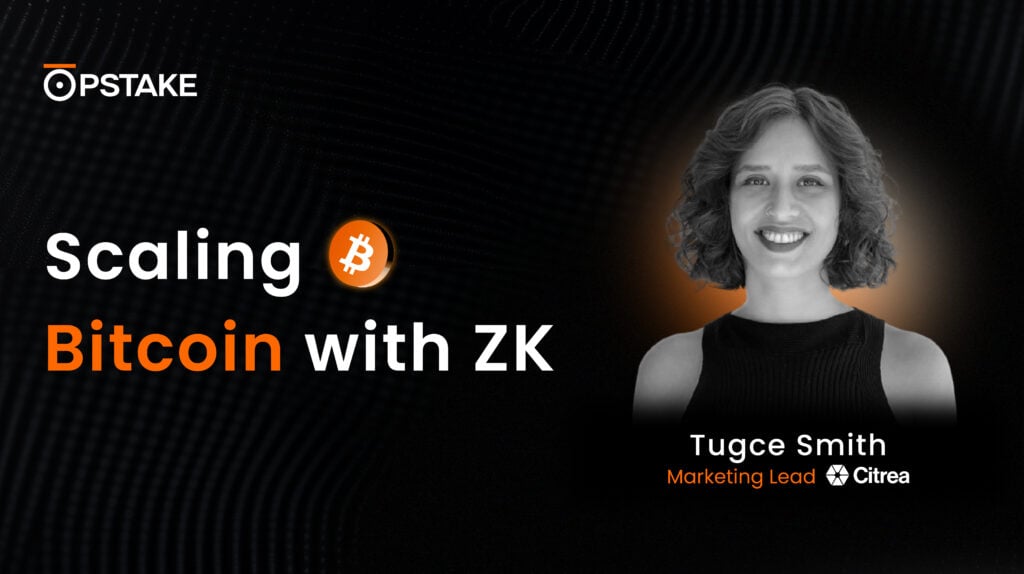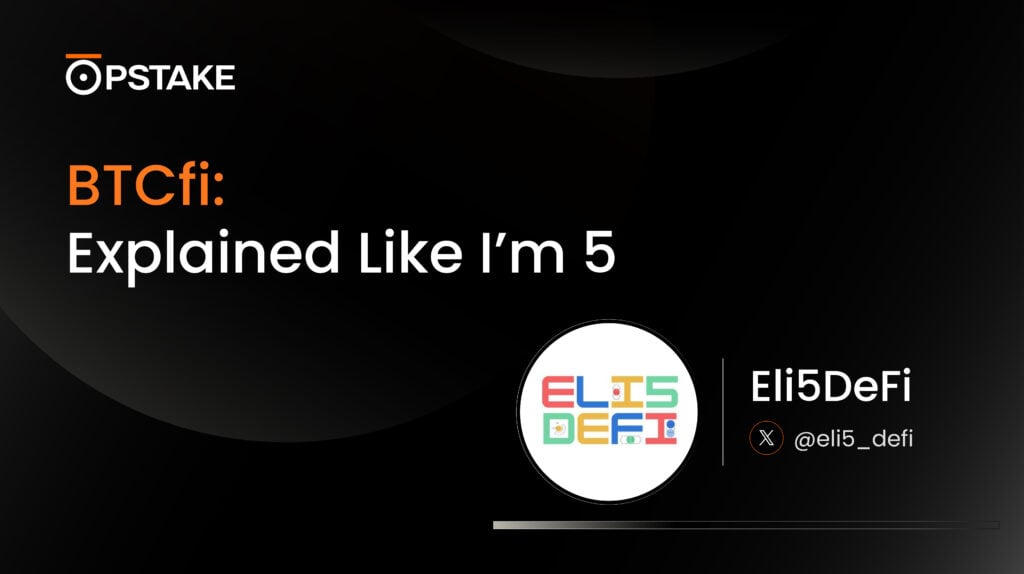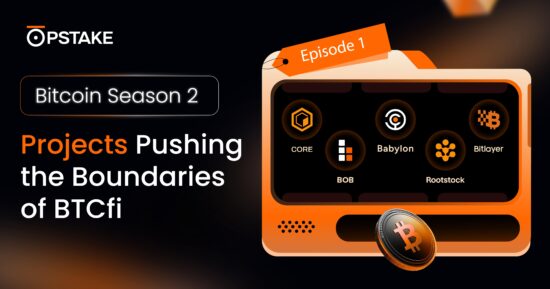The Bitcoin Season 2 buzzword continues to proliferate in the crypto space, especially with BTC dominance making new highs as Bitcoin strengthens its grip on the market. Often referred to as the second coming of Bitcoin, Bitcoin Season 2 encompasses a series of projects pushing the boundaries of what’s possible on the Bitcoin blockchain, with platforms building solutions to introduce scalability and programmability to the Bitcoin network.
As a result, countless DeFi opportunities exist for BTC holders to generate yield on native BTC alongside more platforms working to improve the network’s scalability. With the number of projects building on Bitcoin multiplying, we wanted to create a new series to highlight those pushing the boundaries of BTCfi—welcome to Bitcoin Season 2, Episode 1.
In this first installment, we will cover some of the most notable names in the BTCfi space and highlight their impact on the Bitcoin world.
Top Projects Pushing the Boundaries of Bitcoin Season 2.
The following is an overview of the top BTCfi projects pushing the boundaries of what’s possible with Bitcoin Season 2.
1. Bitlayer

Bitlayer is one of the first Bitcoin Layer 2 scaling solutions based on the BitVM paradigm. It can enhance Bitcoin’s scalability and introduce smart contract functionality while retaining its security. BitVM was introduced by a Bitcoin developer in 2023, and it supports Turing-complete computations, setting the foundations for the development of complex dApps.
With an impressive TVL of over $500,000 million as of mid-September 2024, Bitlayer is solidifying its position as one of the leading projects redefining the possibilities in BTCfi.
Here are some of the key features of Bitlayer:
- Bitlayer utilizes BitVM and zero-knowledge proofs to introduce smart contracts and enhance scalability.
- Bitlayer boasts a trustless bridge that leverages Optimistic Discreet Log Contracts (OP-DLC) with BitVM. This feature supports asset transfer between Bitcoin and Bitlayer, ensuring users can interact with Layer-2 applications with complete peace of mind.
- Bitlayer also has a Layered Virtual Machine (LVM), which executes smart contracts and generates zero-knowledge proofs for the platform.
- As Bitlayer is Turing complete, it can support other virtual machines (VMs), like EVM, SolVM, and MoveVM.
Website: https://www.bitlayer.org/
Twitter: https://twitter.com/BitLayerLabs
Telegram: https://t.me/bitlayerofficial
2. CoreDAO

CoreDAO is a complete Layer-one blockchain that allows developers to deploy EVM-compatible smart contracts and dApps secured by Bitcoin. The project leads the way in terms of innovation by combining DPoW and DPoS in one ecosystem through its Satoshi Plus mechanism.
Launched in January 2023, Core has already attracted over 5 million active wallets and 282 million on-chain transactions, demonstrating its building popularity as it pushes the boundaries of what’s possible in BTCfi.
Here are some of the key features of CoreDAO:
- CoreDAO utilizes a Satoshi Plus consensus mechanism that combines the best of Bitcoin and Ethereum. Security is managed through DPoW from Bitcoin mining pools, while scalability and programmability are managed through DPoS for CORE token holders.
- CoreDAO offers non-custodial Bitcoin staking on the Core blockchain, integrating Bitcoin into Core Chain’s DeFi activities and allowing BTC holders to earn staking rewards in CORE tokens.
- CoreDAO integrates Bitcoin miners in the security of its Turing-complete smart contracts, providing them with additional income through CORE token rewards.
- It also provides liquid staking through stCORE, providing yield while retaining liquidity.
- CoreDAO recently released a dual staking model that provides additional yields for those staking BTC and CORE tokens together.
To learn more about CoreDAO, take a look at its in-depth report that covers everything in the BTCfi world for Core:
Website: https://coredao.org/
Twitter: https://twitter.com/Coredao_Org
Telegram: https://t.me/CoreDAOTelegram
3. Rootstock

Rootstock is the longest-running Bitcoin sidechain. It allows developers to deploy dApps and EVM-compatible smart contracts secured by Bitcoin. The sidechain introduces a novel consensus mechanism that allows its blockchain to be secured by over 50% of the Bitcoin hashing power through merged mining.
The sidechain runs adjacent to the Bitcoin blockchain and is connected via a two-way bridge. Founded by RSK Labs, Rootstock has attracted an impressive $163 TVL, demonstrating its commitment to bringing versatility to Bitcoin.
Here are some of the key features of Rootstock:
- Secured by Bitcoin PoW by allowing miners to “merge mine” on both Bitcoin and Rootstock with no additional effort.
- Rootstock’s PowPeg provides a two-way, proof-of-work secured peg to enable users to convert BTC to RBTC – pegged 1:1.
- The platform uses RBTC to interact with DeFi protocols and dApps on the Rootstock network.
- Rootstock’s RVM is also interoperable with Ethereum through the Rootstock-Ethereum token bridge.
Website: https://rootstock.io/
Twitter: https://twitter.com/rootstock_io
Telegram: https://t.me/rskofficialcommunity
4. Babylon Labs

Babylon is on a mission to unlock the 21 million BTC so that its liquidity can be used to secure the decentralized economy through PoS chains. Babylon is pushing the boundaries of what’s possible on Bitcoin by turning BTC into a slashable asset so that it can be staked on the PoS chain to generate rewards, bringing yields to BTC holders. In essence, it’s the world’s first self-custodial Bitcoin staking product.
The platform pushes Bitcoin’s value premise from being a store of value to a yield-generating asset. The protocol opened its doors for BTC staking at the end of August and filled its 1,000 BTC cap in just six BTC blocks through 21,000 staking transactions, demonstrating the eagerness of BTC holders to generate yield.
Here are some of the key features of Babylon:
- Babylon is a security-sharing protocol that leverages BTC’s enormous security hashing power to secure PoS chains.
- By utilizing the UTXO design and time-locking feature on the Bitcoin codebase, Babylon figured out how to turn BTC into a slashable asset, allowing it to add economic security to PoS chains.
- Babylon doesn’t require users to bridge, wrap, or peg their BTC to start staking.
- The introduction of Babylon brought true native and non-custodial staking to the BTC network for the first time.
- Paradigm, Polychain Capital, Binance Labs, and OKX Ventures back the project.
Website: https://babylonlabs.io/
Twitter: https://x.com/babylonlabs_io
Telegram: https://t.me/babyloncommunity
5. Build on Bitcoin

Build on Bitcoin (BOB) is the first hybrid Layer-2 network that combines the security of Bitcoin with the versatility of Ethereum. By leveraging the Optimism OP Stack, BOB brings Ethereum scaling and smart contracts to the Bitcoin blockchain. At the same time, it leverages the security of Bitcoin through merged mining.
BOB is not just about pushing the boundaries of innovation for BTCfi, but also about staying true to Bitcoin’s core values. With an impressive $87 million TVL, BOB is not just gaining traction, but rapidly becoming a driving force of innovation in the BTCfi space.
Here are some of the key features of CoreDAO:
- BOB borrows the PoW security from Bitcoin alongside its Layer-2 solution that improves transaction speeds. The security is borrowed through “Merged Mining.”
- BOB utilizes a Rollup Layer to utilize Optimistic rollups and batch transactions to improve transaction privacy and efficiency.
- BOB is interoperable with Ethereum through ‘EVM compatibility ‘, which means it can run Ethereum smart contracts and decentralized applications (dApps) directly on its blockchain.
- By tapping into the liquidity of both Bitcoin and Ethereum, BOB leverages the two largest blockchains.
Website: https://www.gobob.xyz/
Twitter: https://twitter.com/build_on_bob
Telegram: https://t.me/gobobxyz
About pSTAKE Finance
pSTAKE Finance is a Bitcoin Yield and Liquid Staking protocol, backed by Binance Labs.
With pSTAKE Finance, users can liquid stake BTC to get rewards from Babylon’s Trustless BTC staking for securing other app chains while maintaining their liquidity.
Accessing Bitcoin yields should not be complex, risky, or unsafe. With four years of liquid staking expertise and expert-curated yield strategies, pSTAKE Finance helps individuals and institutions put their BTC to work in BTCfi.
pSTAKE Finance has partnered with leading blockchain security firms, such as Halborn, Hexens, Oak Security, Immunefi, Forta, and more, to offer a secure liquid staking product suite.
PSTAKE is the governance and incentivization token of the pSTAKE Finance protocol. It has some of the most prominent investors, including Binance Labs, DeFiance Capital, Spartan Group, Coinbase Ventures, and Kraken Ventures.










